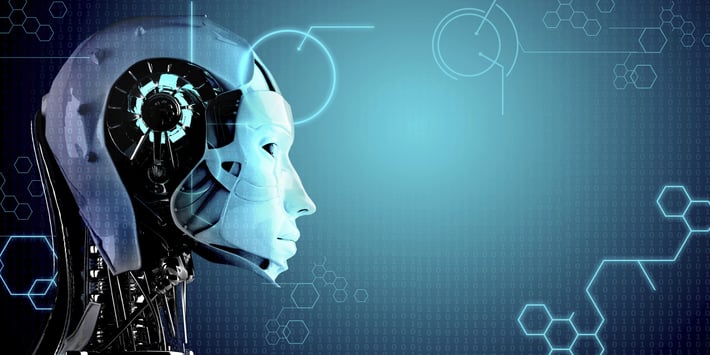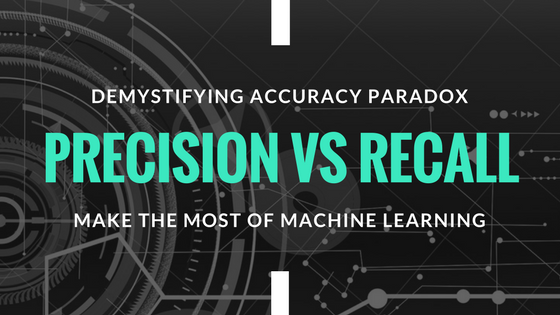3 min read
Artificial Intelligence vs Machine Learning vs Data Science
Sales : Nov 7, 2017 12:00:00 AM

Modern technologies like artificial intelligence, machine learning, data science and big data have become the buzzwords which everybody talks about but no one fully understands. They seem very complex to a layman. All these buzzwords sound similar to a business executive or student from a non-technical background. People often get confused by words like AI, ML and data science. In this blog, we explain these technologies in simple words so that you can easily understand the difference between them and how there are being used in business.

What is Artificial Intelligence (AI)?
Artificial intelligence refers to the simulation of a human brain function by machines. This is achieved by creating an artificial neural network that can show human intelligence. The primary human functions that an AI machine performs include logical reasoning, learning and self-correction. Artificial intelligence is a wide field with many applications but it also one of the most complicated technology to work on. Machines inherently are not smart and to make them so, we need a lot of computing power and data to empower them to simulate human thinking.
Artificial intelligence is classified into two parts, general Artificial Intelligence and Narrow Artificial Intelligence. General AI refers to making machines intelligent in a wide array of activities that involve thinking and reasoning. Narrow AI, on the other hand, involves the use of artificial intelligence for a very specific task. For instance, general AI would mean an algorithm that is capable of playing all kinds of board game while narrow AI will limit the range of machine capabilities to a specific game like chess or scrabble. Currently, only narrow AI is within the reach of developers and researchers. General AI is just a dream of researchers and perception among the masses that will take a lot of time for the human race to achieve (if ever possible).
Read More: How to Use IoT and AI for Improving Customer Satisfaction?
What is Machine Learning?
Machine learning is the ability of a computer system to learn from the environment and improve itself from experience without the need for any explicit programming. Machine learning focuses on enabling algorithms to learn from the data provided, gather insights and make predictions on previously unanalyzed data using the information gathered. Machine learning can be performed using multiple approaches. The three basic models of machine learning are supervised, unsupervised and reinforcement learning.
In case of supervised learning, labeled data is used to help machines recognize characteristics and use them for future data. For instance, if you want to classify pictures of cats and dogs then you can feed the data of a few labeled pictures and then the machine will classify all the remaining pictures for you. On the other hand, in unsupervised learning, we simply put unlabeled data and let machine understand the characteristics and classify it. Reinforcement machine learning algorithms interact with the environment by producing actions and then analyze errors or rewards. For example, to understand a game of chess an ML algorithm will not analyze individual moves but will study the game as a whole.
Read More: Descriptive vs. Predictive vs. Prescriptive Analytics
What is Data Science?
Data science is the extraction of relevant insights from data. It uses various techniques from many fields like mathematics, machine learning, computer programming, statistical modeling, data engineering and visualization, pattern recognition and learning, uncertainty modeling, data warehousing, and cloud computing. Data Science does not necessarily involve big data, but the fact that data is scaling up makes big data an important aspect of data science.
Data science is the most widely used technique among AI, ML and itself. The practitioners of data science are usually skilled in mathematics, statistics, and programming (although expertise in all three is not required). Data scientists solve complex data problems to bring out insights and correlation relevant to a business.
Read More: R vs Python for Data Science
The Difference between Artificial Intelligence, Machine Learning and Data Science:
Artificial intelligence is a very wide term with applications ranging from robotics to text analysis. It is still a technology under evolution and there are arguments of whether we should be aiming for high-level AI or not. Machine learning is a subset of AI that focuses on a narrow range of activities. It is, in fact, the only real artificial intelligence with some applications in real-world problems.
Data science isn’t exactly a subset of machine learning but it uses ML to analyze data and make predictions about the future. It combines machine learning with other disciplines like big data analytics and cloud computing. Data science is a practical application of machine learning with a complete focus on solving real-world problems.
At NewGenApps, we focus on developing new age solutions that leverage these technologies and help you solve real-world business problems. If you are looking for a company that can make sense out of your data and gives you insights that matter to your business then feel free to get in touch.





